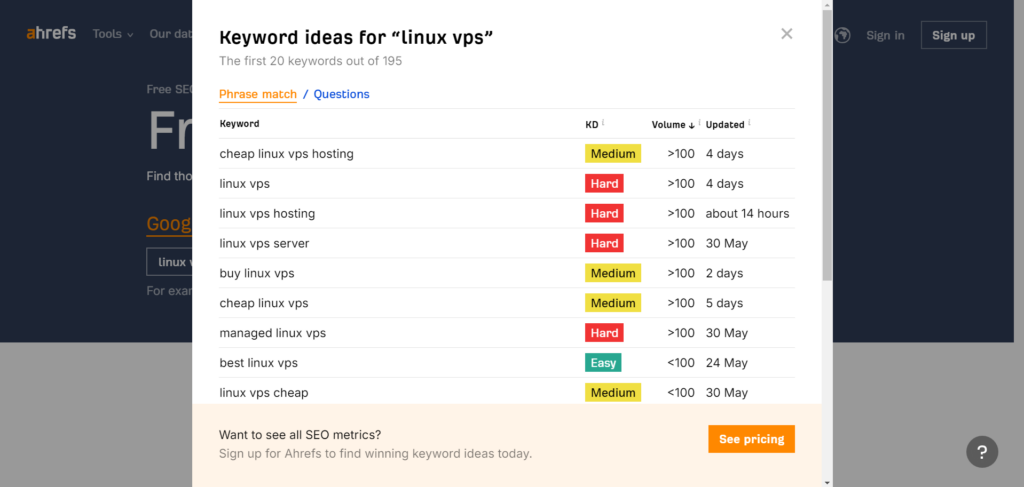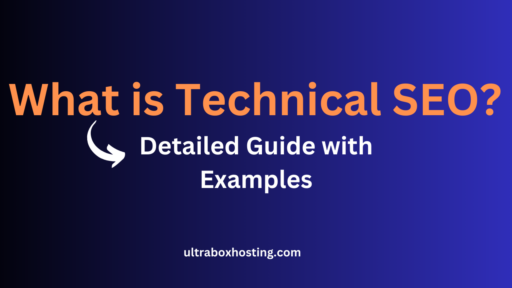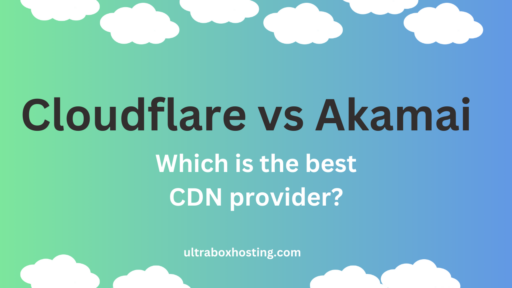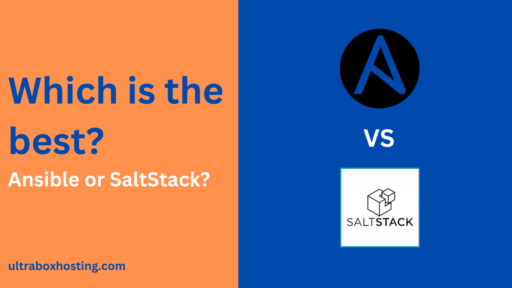If you’re reading this, you’re probably looking to level up your website’s search engine optimization (SEO) game. Today, I’m going to walk you through the intricacies of On-Page SEO. By the end of this guide, you’ll be armed with actionable insights that will help you climb the search engine rankings and drive more organic traffic to your site. Let’s dive in!
Table of Contents
Understanding On-Page SEO
On-Page SEO involves optimizing individual web pages to rank higher and earn more relevant traffic in search engines. It focuses on both the content and HTML source code of a page. Here’s how you can master On-Page SEO:
1. Keyword Research and Optimization

Start with thorough keyword research to understand what terms your audience is searching for. I would personally use Ahrefs’ Free Keyword Planner Tool to get started with. It should give details like getting thousands of keyword ideas, calculating their traffic potential, and finding out how difficult it is to rank for them. Just type in your relevant keyword and try to find the least keyword difficulty (KD) domain and target that.
- Keyword Placement: Once you have your keywords, place them strategically. Ensure your primary keyword appears in the title, first paragraph, subheadings, and naturally throughout the content.
- LSI Keywords: Latent Semantic Indexing (LSI) keywords are related terms that help search engines understand the context of your content. Sprinkle these throughout your article.
Ref – https://ultraboxhosting.com/linux-vps
2. Compelling Titles and Meta Descriptions
Your title tag and meta description are the first things users see in search results. Make them count!
- Title Tag: Keep it under 60 characters and include your primary keyword. Make it engaging and descriptive. The title should be eye-catching to be easily found on Google. An intriguing title can significantly increase your click-through rate (CTR). Here are a few examples of effective title tags:
- “Ultimate Guide to On-Page SEO: Boost Your Rankings”
- “Mastering On-Page SEO: Tips for Top Google Rankings”
- “On-Page SEO Techniques: Improve Your Site’s Visibility”
- Meta Description: Aim for 150-160 characters, providing a compelling reason to click. Include your primary keyword naturally. Think of it as an ad for your content. The description should be detailed about the page, giving users a clear idea of what they will find. Here’s how you can craft a great meta description:
- “Discover essential On-Page SEO techniques to boost your website’s visibility and drive more organic traffic.”
- “Learn how to optimize your web pages with effective On-Page SEO strategies for better search engine rankings.”
- “Explore our comprehensive guide on On-Page SEO and start improving your site’s performance today.”
3. Header Tags (H1, H2, H3, etc.)
Header tags are essential for structuring your content and improving both user experience and SEO. They help search engines understand the hierarchy and importance of your content, and they make your articles easier for readers to navigate. Here’s how to effectively use header tags:
H1 Tag: The Main Heading
Your H1 tag should contain your primary keyword and clearly indicate what the page is about. This is the most important heading on the page, so make it count. The H1 tag is typically the title of your page or blog post and should only be used once per page to avoid confusing search engines.
Example:
<h1>Mastering On-Page SEO: Boost Your Rankings with Proven Techniques</h1>H2 Tags: Subheadings
H2 tags are used for major sections within your content. They help break up your text into manageable chunks and make it easier for readers to find the information they’re looking for. Each H2 tag should be descriptive and include secondary keywords if possible.
Example:
<h2>Understanding On-Page SEO Basics</h2>
<h2>Effective Keyword Research and Optimization</h2>H3 Tags: Sub-Subheadings
H3 tags are used to further break down the sections under your H2 tags. They provide additional structure and can help highlight important points or subtopics. Using H3 tags appropriately ensures your content is well-organized and easy to follow.
Example:
<h2>Effective Keyword Research and Optimization</h2>
<h3>Using Ahrefs for Keyword Research</h3>
<h3>Implementing LSI Keywords</h3>Tips for Using Header Tags:
- Consistency: Ensure a logical flow of information. Each section should build upon the previous one, maintaining a consistent structure throughout.
- Clarity: Make sure each header clearly describes the section it introduces. This helps both readers and search engines understand the content.
- Keywords: While it’s important to include keywords in your headers, avoid keyword stuffing. Use them naturally and only where they make sense.
- Readability: Headers break up large blocks of text, making your content more readable and less overwhelming for readers. This can also help improve your bounce rate and time on page metrics.
By using header tags effectively, you can improve the readability of your content, provide a better user experience, and enhance your SEO efforts. This structured approach makes it easier for search engines to crawl your site and understand its content, ultimately helping you rank higher in search results.
4. High-Quality Content
Creating high-quality content is crucial for improving your search engine rankings and engaging your audience. Here’s how to ensure your content stands out:
- Understand Your Audience
Knowing your audience is the first step to creating relevant content. Conduct thorough research to understand their needs, preferences, and pain points. Tailor your content to address these aspects directly.
- Focus on Originality
Original content is essential for SEO. Avoid duplicate content and offer unique insights or perspectives that set your content apart from competitors.
- Prioritize Clarity and Readability
Make your content easy to read and understand. Use short paragraphs, bullet points, and clear subheadings (like H2 and H3 tags). Avoid jargon unless it’s appropriate for your audience.
- Use Relevant Keywords
Incorporate relevant keywords naturally within your content. Use tools like Ahrefs’ free keyword planner to find low competition keywords that are relevant to your topic. This will help your content rank better without feeling forced.
- Include High-Quality Visuals
Visual elements like images, videos, and infographics can make your content more engaging. Ensure these visuals are high quality and relevant to the content. Don’t forget to use alt text for SEO.
- Provide Value
Your content should provide real value to the reader. Answer questions, solve problems, and offer actionable insights. Valuable content is more likely to be shared and linked to, which boosts your SEO.
- Optimize for On-Page SEO
Ensure your content is optimized for on-page SEO. This includes using header tags, optimizing meta tags, and ensuring fast load times. Structured content is easier for search engines to crawl and index.
- Update Regularly
Keep your content fresh and up-to-date. Regularly review and update your posts to ensure they remain relevant and accurate.
By following these steps, you can create high-quality content that not only improves your SEO but also engages and informs your audience. Remember, the goal is to provide real value while making your content accessible and easy to find.
5. Internal and External Linking
This is pretty straightforward: the more valuable links you include in your content, the better. Google loves well-structured websites, and linking to relevant pages on your site helps search engines index your content more effectively. Here’s how to use internal and external linking to boost your SEO:
Internal Links: Guide Your Readers and Search Engines
Connecting relevant pages on your site is a great way to keep users engaged and help search engines understand the structure of your site. Think of it as creating a web of related content that guides both visitors and search bots through your site.
- User Navigation: By linking to other valuable pages on your site, you help users find more information easily. For instance, if you’re writing about on-page SEO, linking to your blog post on keyword research can provide additional context and value.
- SEO Benefits: Internal links signal to search engines which pages are related and important. This can help improve your site’s crawlability and indexation. When Google sees a well-linked page, it understands the relevance and hierarchy of your content better.
External Links: Boost Credibility with Quality Sources
Linking to high-authority external sites can significantly enhance the credibility and depth of your content. It’s not just about showing off that you’ve done your homework, but also about building trust with your readers and search engines.
- Adding Value: When you link to reputable sources, you provide your readers with additional resources to explore. This can make your content more comprehensive and valuable.
- Building Trust: High-quality external links signal to both users and search engines that your content is well-researched and trustworthy. For example, if you reference a study or a statistic, linking to the original source adds credibility to your claims.
6. Image Optimization
Images make your content more engaging and visually appealing, but they also need to be optimized for better performance and SEO. Here’s how you can make the most of your images:
Alt Text: Enhance Accessibility and SEO
Including descriptive alt text with relevant keywords is crucial. Alt text not only helps visually impaired users understand what the image is about but also allows search engines to better index and rank your images.
- Accessibility: Ensure that everyone, including those using screen readers, can understand the context of your images. For example, instead of “image1.jpg,” use something like “A detailed infographic explaining on-page SEO techniques.”
- SEO Boost: Use relevant keywords in your alt text to help search engines understand the content of your images. This can improve your chances of appearing in image search results.
File Size: Speed Up Your Site
Compressing images is essential to reduce load times without compromising quality. Faster loading times lead to a better user experience and can positively impact your SEO.
- Compression Tools: Use tools like TinyPNG to compress your images before uploading them. This helps in maintaining image quality while significantly reducing file size.
- Formats: Consider modern formats like WebP for better compression and quality. WebP images are often smaller in size compared to traditional JPEG or PNG files, which can help your site load faster.
Best Practices for Image Optimization
- Descriptive Filenames: Use clear and descriptive filenames for your images. Instead of “IMG_1234.jpg,” use “linux–vps-panel.png”
- Responsive Images: Ensure your images are responsive and look good on all devices. Use the srcset attribute in HTML to provide different image resolutions for different screen sizes.
- Lazy Loading: Implement lazy loading for your images to improve load times. This technique loads images only when they are about to appear in the user’s viewport, reducing initial load time.
For an in-depth look at optimizing images and other Technical SEO practices, check out my other post on technical SEO
7. URL Structure
Ensure that your URLs accurately describe the content of the page. This helps both users and search engines understand what the page is about at a glance.
Example:
- Good URL: www.example.com/on-page-seo-tips
- This URL is clear and directly tells the user that the page is about on-page SEO tips.
- Bad URL: www.example.com/page?id=12345
- This URL is unclear and doesn’t provide any information about the page content.
Short and Simple URLs
Avoid long, complex URLs with unnecessary parameters. Keep them concise and straightforward to enhance user experience and SEO.
Example:
- Good URL:
- This URL is short, descriptive, and includes the primary keyword “power over ethernet guide”.
- Bad URL: www.example.com/blog/2024/06/09/on-page-seo-guide
- This URL is too long and includes unnecessary details like the date and overly complex descriptions.
Crafting an Ideal URL
When creating your URLs, combine the principles of being descriptive, short, and including your primary keyword.
Example:
- Primary Keyword: “image optimization tips”
- Ideal URL: www.example.com/image-optimization-tips
Combining On-Page SEO with Technical SEO for Optimal Results
For the best results, you need to integrate On-Page and Technical SEO strategies. Here’s how:
- Regular Audits: Conduct regular SEO audits to identify and fix issues.
- Monitor Performance: Use tools like Google Analytics and Google Search Console to track your performance.
- Stay Updated: SEO is constantly evolving. Stay updated with the latest trends and algorithm changes.
Conclusion
Mastering On-Page SEO is a journey, but it’s one that pays off with increased visibility, traffic, and conversions. By focusing on high-quality content, strategic keyword placement, and a technically sound website, you can improve your search engine rankings and provide a better user experience.
Remember, SEO isn’t a one-time task but an ongoing process. Keep refining your strategies, and don’t be afraid to experiment and learn from your results. Happy optimizing!
By incorporating these detailed On-Page SEO techniques into your strategy, you’re well on your way to boosting your website’s performance and achieving your digital goals. Stay curious, stay updated, and keep optimizing!




